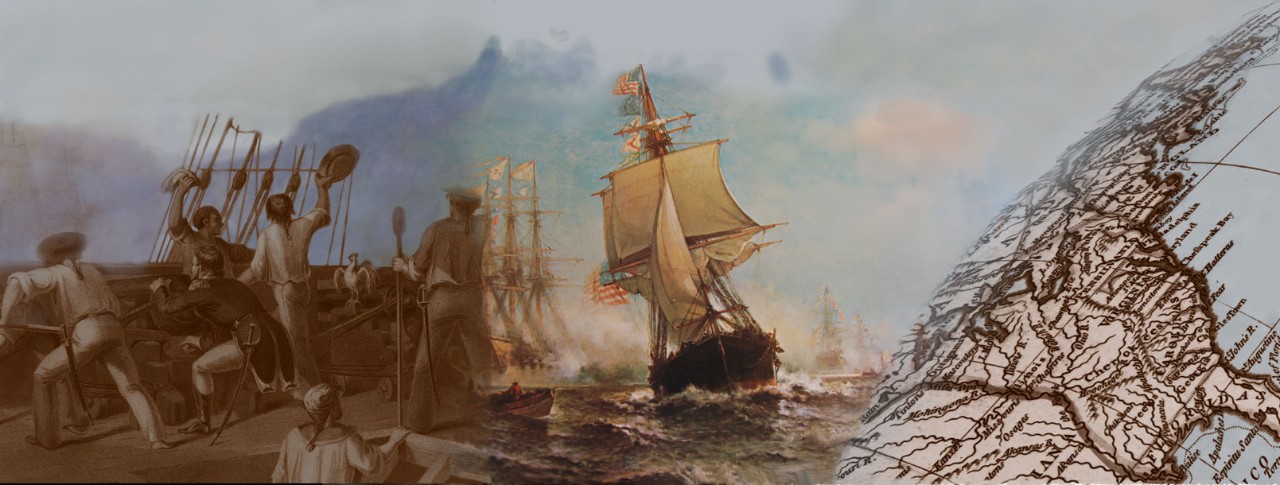
Antrim, Richard N.
Richard Nott Antrim was born on 17 December 1907 in Peru, Indiana. Following a year of enlisted Naval Reserve service, he entered the U.S. Naval Academy in 1927. Graduated in June 1931 and receiving a commission in the rank of Ensign, he briefly served in the Eleventh Naval District offices at San Diego, California, then reported for sea duty in the battleship New York. In April 1932, he began instruction at Naval Air Station, Pensacola, Florida, after which he returned to sea in the oiler Salinas, ammunition ship Nitro, and light cruiser Trenton. Antrim then helped to fit out and subsequently served on board the heavy cruiser Portland. In June 1934, while assigned to the latter ship, he was promoted to Lieutenant Junior Grade. Following a brief tour on board the destroyer Crowninshield, in July 1936 he was assigned to Naval Air Station, Lakehurst, New Jersey for training and duty with lighter-than-air-aircraft (dirigibles and balloons). In May 1938, he became Executive Officer of the minesweeper Bittern. Antrim was promoted to Lieutenant in July 1939 and in December transferred to the destroyer Pope as her the Executive Officer. While serving in that Asiatic Fleet ship in September 1940, he received his designation as a Naval Aviator (LTA).
During the first months of World War II, Pope participated in the desperate struggle to defend the Philippines and Netherlands East Indies. On 1 March 1942, following the Battle of the Java Sea, she attempted to escort the damaged British heavy cruiser Exeter out of the combat zone, but was sunk by aircraft bombs when the little force was intercepted by the enemy. Though wounded, Lieutenant Antrim led the ship's survivors as they drifted at sea for three days, until the enemy picked them up and took them to a prisoner of war facility at Makassar, Celebes. In April 1942, when a fellow officer was being viciously beaten and close to death, Antrim bravely stepped forward and offered to take the rest of the punishment, stunning the Japanese guards, inspiring the Allied prisoners, and creating among the enemy a new-found respect for their American captives. For his "conspicuous gallantry and intrepidity" on this occasion, Antrim was awarded the Medal of Honor.
While a Prisoner of War, he continued his leadership role and devised a clever method of communicating the identity of the prison camp to Allied forces. He was temporarily promoted to Commander in November 1942, which rank was made permanent in 1949. Following liberation in September 1945, Antrim returned to the United States and attended the Repatriated Prisoner of War Refresher Course. He then received training at Naval Air Station, Lakehurst, New Jersey, the Naval War College, Newport, Rhode Island, and the Fleet Sonar School, San Diego, California. He was commanding officer of the destroyer Turner in 1947 and 1948, followed by a Lighter Than Air Planning and Programs assignment at the Office of Chief of Naval Operations in Washington, D.C. While in this post, he was promoted in July 1950 to Captain. Remaining in the National Capital during the early 1950s, Antrim served with the Policy Advisory Staff at the Department of State and on the Psychological Strategy Board. Beginning in August 1952, he commanded the attack transport Montrose. Returning to Washington D.C. in June 1953, Captain Antrim became the Head of the Naval Amphibious Warfare Matters Section in the Office of the Chief of Naval Operations. Due to health problems, he retired in June 1954 and was promoted at that time to the rank of Rear Admiral on the retired list. Richard N. Antrim died on 8 March 1969 and is buried at Arlington National Cemetery, Arlington, Virginia.
USS Antrim (FFG-20), 1981-1998, was named in honor of Rear Admiral Richard N. Antrim.
This page features the only images we have concerning Richard N. Antrim.


